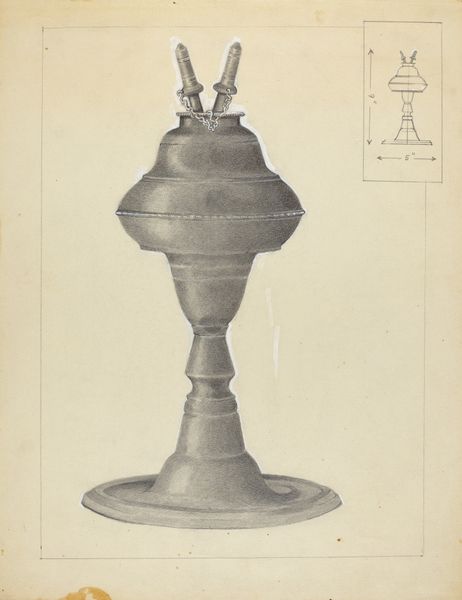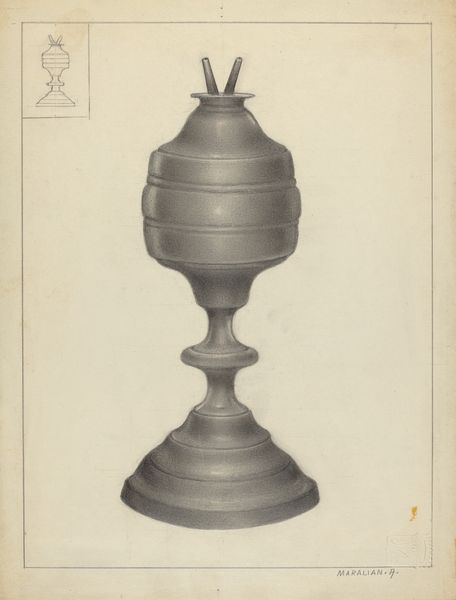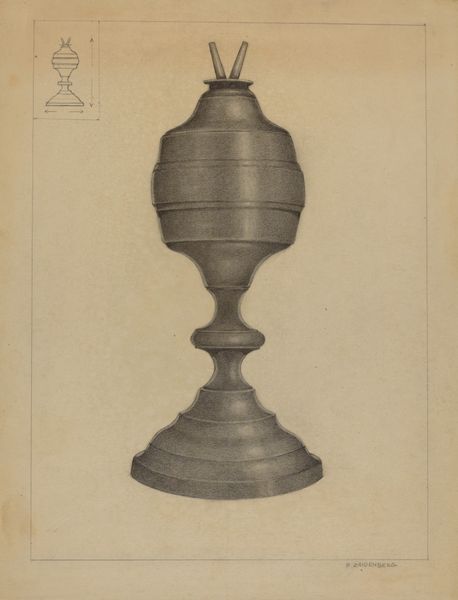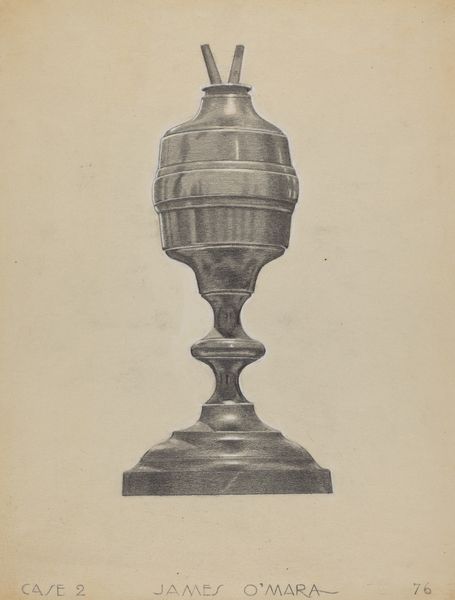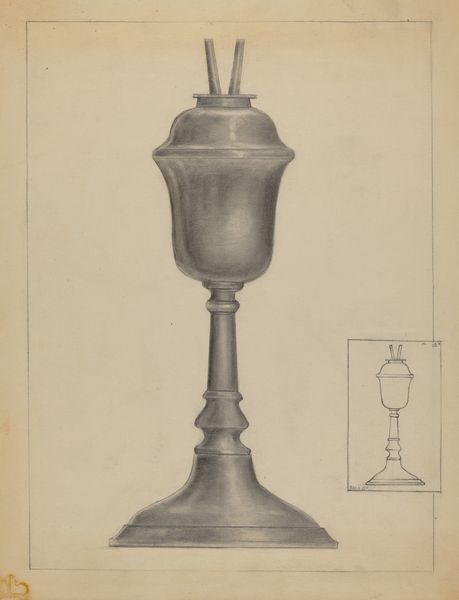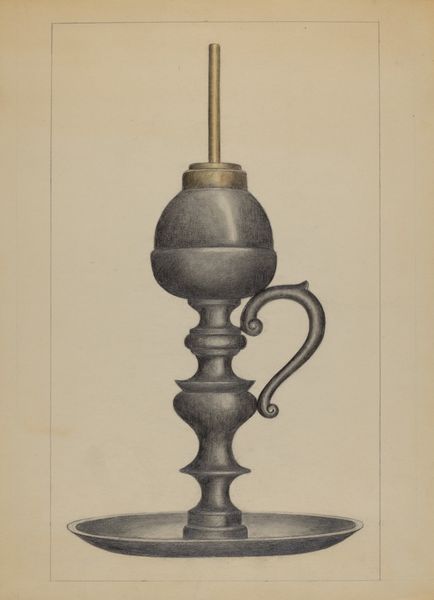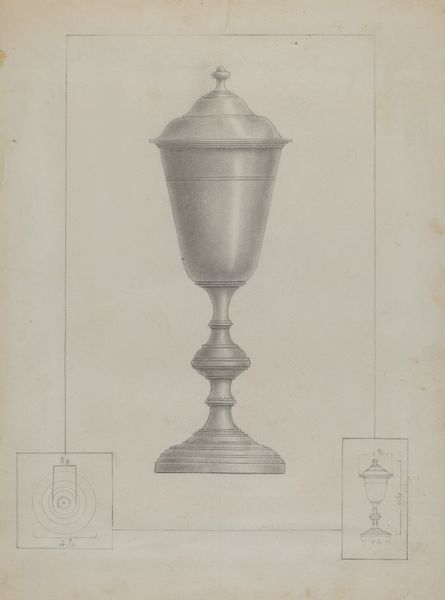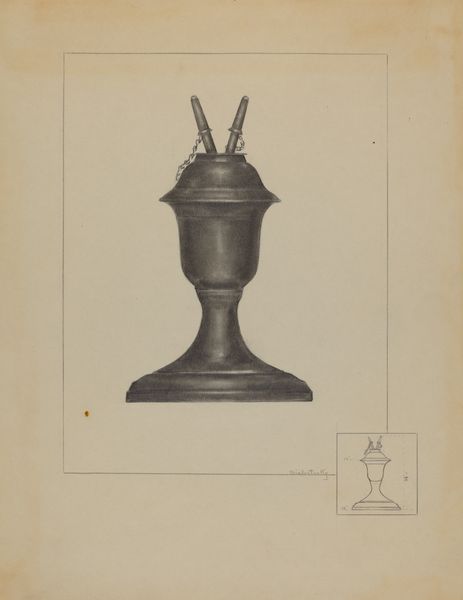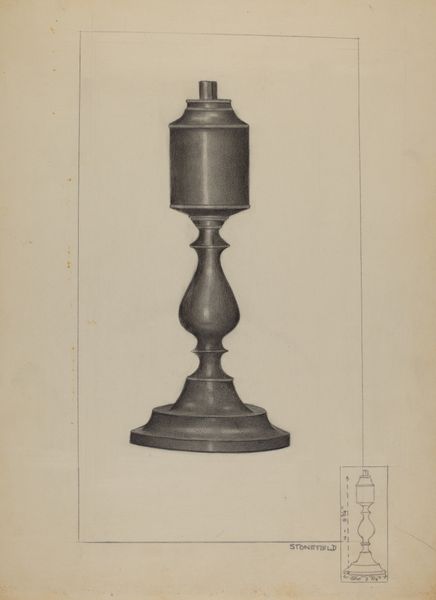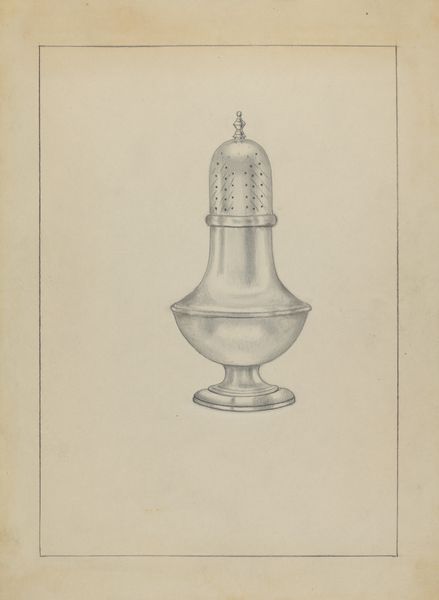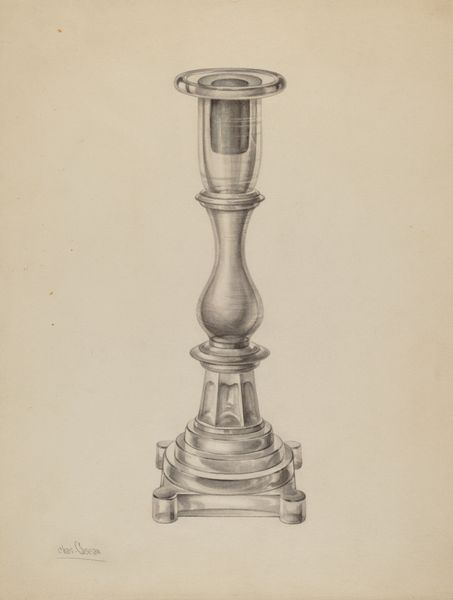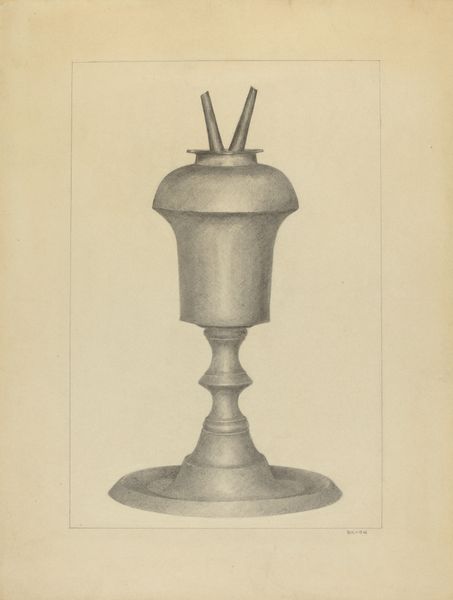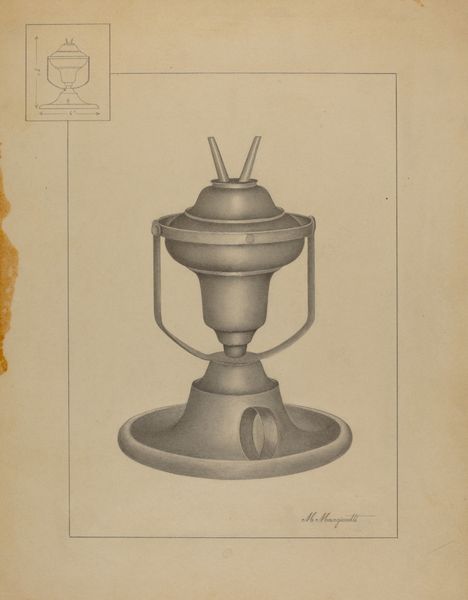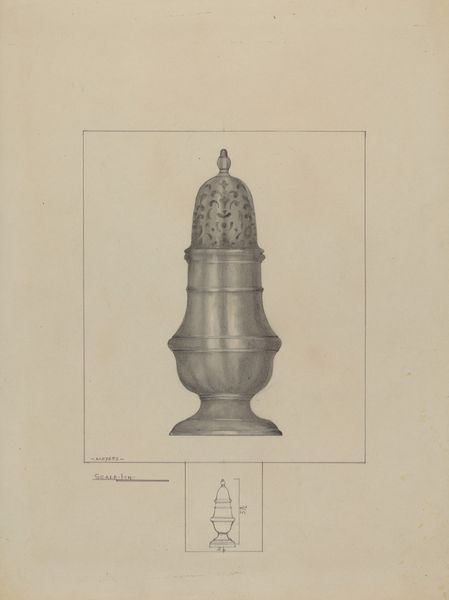
drawing, pencil, graphite
#
pencil drawn
#
drawing
#
pencil sketch
#
coloured pencil
#
pencil
#
graphite
#
academic-art
Dimensions: overall: 28.7 x 22.5 cm (11 5/16 x 8 7/8 in.)
Copyright: National Gallery of Art: CC0 1.0
Curator: Let’s turn our attention to "Lamp," a drawing rendered circa 1936 by Mario De Ferrante, using graphite and colored pencil. What’s your immediate response to this piece? Editor: It's quite elegant, but there’s something almost… spectral about it. The muted tones give it an otherworldly feel. The twin spouts on top are strangely compelling. Curator: Well, consider the era. Designs like this weren’t just pulled from thin air. They reflect the evolving technologies, manufacturing capabilities, and aesthetic tastes of the pre-war period. Editor: True, and the shape reminds me a little of certain reliquaries or chalices. Do you think De Ferrante intentionally evoked a sense of the sacred with a functional object? The embellishments around the base and upper reservoir echo ancient decorative motifs. Curator: It’s fascinating to consider that possibility. The design process itself—the choices of line, the shading techniques, it speaks to the craftsman’s meticulous labor. Editor: I'm particularly drawn to those dual spouts, they are reminiscent of a caduceus, maybe hinting at alchemy and transformation beyond simple illumination. The drawing itself, so precisely executed, also symbolizes transformation, turning raw material into aesthetic value. Curator: A solid point. And while the object itself may or may not hold hidden symbolism, its existence in drawing form emphasizes function but equally aesthetic aspiration and commercial appeal in the interwar years. Editor: That duality – the intersection of practical application and symbolic weight—it makes "Lamp" such a curious object. It's a cultural artifact masquerading as a blueprint. Curator: Indeed, and looking closely at De Ferrante's technique with graphite and pencil allows one to almost touch the past – understanding design's impact in everyday material life. Editor: For me, that interplay is what continues to intrigue. Thanks for casting a light, if you will, on De Ferrante's intriguing creation. Curator: My pleasure, and next up we can consider other approaches for looking at art of this period.
Comments
No comments
Be the first to comment and join the conversation on the ultimate creative platform.
